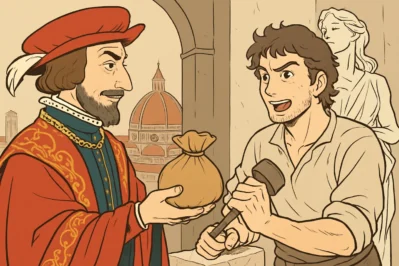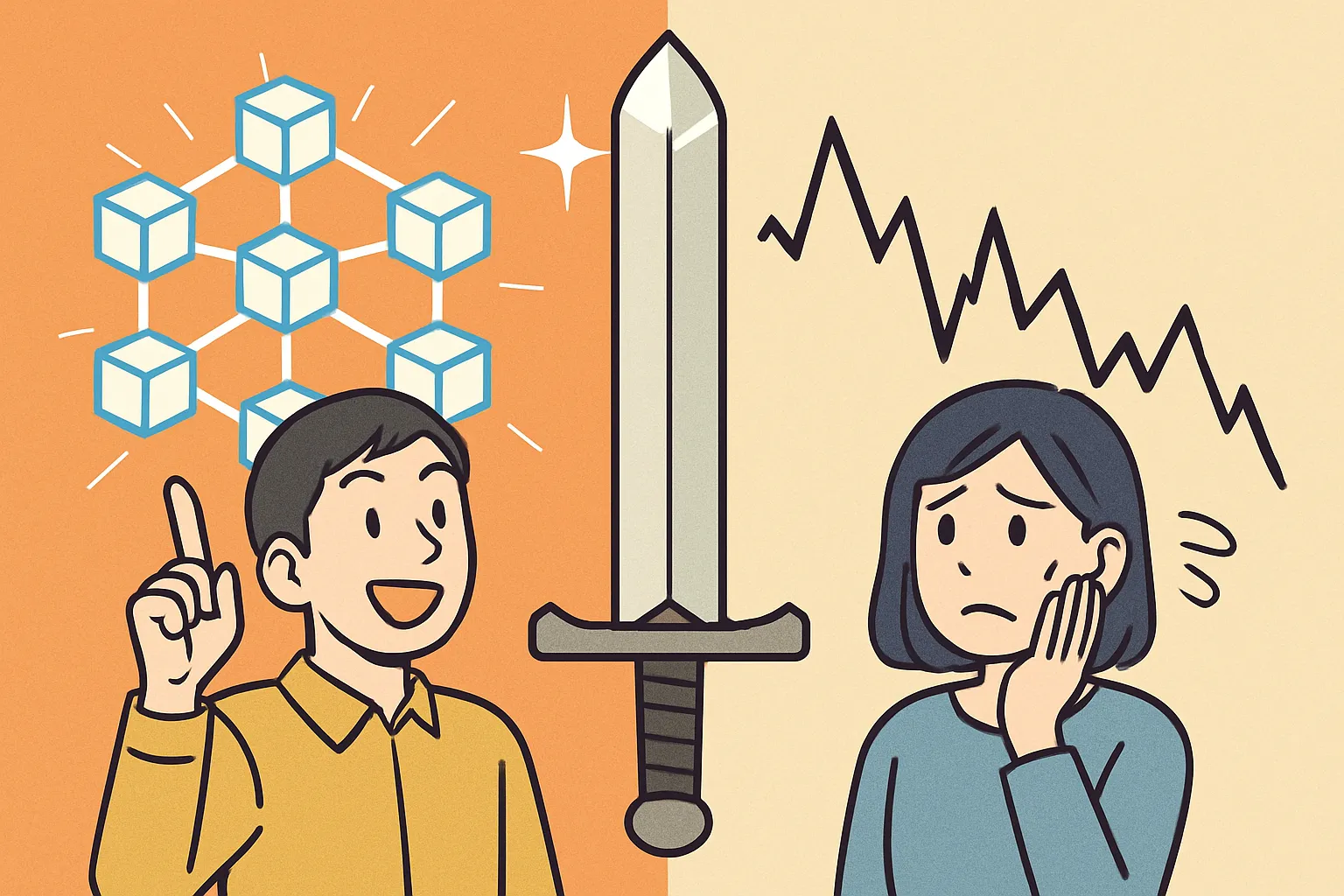Medici’s Midas Touch: Mastering Korean for Art Patronage
Hello! It’s your favorite Korean guide, [Maeil Hangeul], here to upgrade your skills to the absolute highest level!
Today, we’re stepping back in time to the Italian Renaissance, but I promise you, this is directly relevant to sounding like an intellectual native speaker in modern Korea. We’ll be exploring the Medici family and their legendary art patronage. Why? Because these days in Korea, there’s a huge conversation around corporate sponsorship of the arts—a kind of modern-day Renaissance! Companies are funding everything from blockbuster art exhibitions to indie film festivals. By mastering the vocabulary to discuss the original patrons, the Medicis, you’ll be perfectly equipped to join these high-level cultural discussions.
Let’s dive in and learn how to talk about art, influence, and legacy like a pro.
Core Expressions for Cultural Connoisseurs
Here are four essential terms that will elevate your Korean when discussing history, art, and influence.
1. 후원 (Huwon)
- Pronunciation [Romanized]: Hu-won
- English Meaning: Patronage, sponsorship, support
- Detailed Explanation: This is far more profound than a simple donation (기부) or support (지원). 후원 (後援) is composed of Hanja characters meaning “behind” (後) and “to aid” (援). It carries the nuance of providing significant, steady support from behind the scenes, enabling a person or project to flourish. It’s the perfect term for the Medici’s relationship with artists like Michelangelo. You’ll hear it used for corporate sponsorship of the arts (기업의 예술 후원) and non-profit organizations.
2. 안목 (Anmok)
- Pronunciation [Romanized]: An-mok
- English Meaning: A discerning eye, good taste, judgment
- Detailed Explanation: The Medicis didn’t just have money; they had 안목 (眼目). This word refers to the sophisticated ability to recognize true value and quality. It’s the “eye” (眼) to see potential that others miss. It’s not just for art; you can use it to describe someone who has a great eye for fashion (패션 안목), talent (사람을 보는 안목), or investment opportunities. Praising someone’s anmok is a high compliment.
3. 막대한 영향력을 행사하다 (Makdaehan yeonghyangnyeogeul haengsahada)
- Pronunciation [Romanized]: Mak-dae-han yeong-hyang-ryeo-geul haeng-sa-ha-da
- English Meaning: To exert immense influence
- Detailed Explanation: This is a powerful, formal phrase perfect for academic or professional contexts. Let’s break it down: 막대하다 (to be immense/vast), 영향력 (influence), and 행사하다 (to exert/exercise). While a simpler phrase like ‘큰 영향을 주다’ (to give a big influence) is fine, using this full expression demonstrates a much higher command of the language. It perfectly describes how the Medici family shaped the course of Western art history.
4. ~의 초석을 다지다 (~ui choseogeul dajida)
- Pronunciation [Romanized]: ~ui cho-seo-geul da-ji-da
- English Meaning: To lay the foundation/cornerstone for ~
- Detailed Explanation: This is a beautiful, literary expression. 초석 (礎石) means “cornerstone,” and 다지다 means “to pack down” or “to solidify.” Together, they create the image of firmly putting in place the fundamental stone upon which something great is built. You can say the Medicis’ patronage “laid the foundation for the Renaissance” (르네상스의 초석을 다졌다). It’s an elegant phrase for essays, presentations, or any formal discussion about pivotal moments in history.
Sample Dialogue: At the Museum
Imagine two friends, Minjun (A) and Sora (B), at a special exhibition on the Renaissance at the National Museum of Korea.
A: 이 전시회 정말 대단하다. 메디치 가문은 정말 예술가를 알아보는 특별한 안목이 있었던 것 같아.
A: [I jeonsihoe jeongmal daedanhada. Medichi gamuneun jeongmal yesulgareul araboneun teukbyeolhan anmogi isseotdeon geot gata.]
A: This exhibition is incredible. It seems the Medici family truly had a special discerning eye for recognizing artists.
B: 맞아. 그들의 후원은 단순히 돈을 대주는 걸 넘어 르네상스 시대의 초석을 다진 셈이지.
B: [Maja. Geudeurui huwoneun dansunhi doneul daejuneun geol neomeo reunesangseu sidaeui choseogeul dajin semiji.]
B: Exactly. Their patronage went beyond just providing money; it essentially laid the foundation for the Renaissance era.
A: 정말 그래. 그들이 정치와 문예에 막대한 영향력을 행사했기 때문에 오늘날 우리가 이 작품들을 볼 수 있는 거잖아.
A: [Jeongmal geurae. Geudeuri jeongchiwa munyee makdaehan yeonghyangnyeogeul haengsahaetgi ttaemune oneulnal uriga i jakpumdeureul bol su inneun geojana.]
A: So true. It’s because they exerted such immense influence on politics and culture that we can see these works today.
B: 현대 한국 기업들의 문화 예술 후원 활동을 보면, 현대판 메디치 가문 같다는 생각도 들어.
B: [Hyeondae hanguk gieopdeurui munhwa yesul huwon hwaldongeul bomyeon, hyeondaepan medichi gamun gatdaneun saenggakdo deureo.]
B: Looking at the cultural and artistic sponsorship activities of modern Korean companies, it makes you think of them as a modern version of the Medici family.
Culture Tip: The Medici Spirit in Modern Korea
The concept of 후원 is alive and well in 21st-century Korea. The term you’ll often hear in the news alongside it is 메세나 (Mecenat), named after Gaius Maecenas, a Roman patron of the arts. Korean conglomerates (재벌) are major players in the nation’s “Mecenat” activities.
- Corporate Mecenat: The Samsung Foundation of Culture operates the world-class Leeum Museum of Art, and Hyundai Card is famous for its “Super Concert” series, which brings legendary international musicians to Korea. This is a perfect modern example of using wealth to 막대한 영향력을 행사하다 in the cultural sphere.
-
Grassroots Patronage: The spirit of 후원 isn’t limited to the wealthy! In the world of K-Pop, fans are the new patrons. They pool money to fund massive projects for their idols’ birthdays, like billboard ads in Times Square or donating to charity in the artist’s name. It’s a fascinating modern twist on patronage, demonstrating incredible collective power.
Let’s Review & Practice!
You’ve done an amazing job today, tackling some truly advanced and nuanced concepts. We learned:
* 후원: Deep, meaningful patronage.
* 안목: The discerning eye to see true value.
* 막대한 영향력을 행사하다: To exert immense influence.
* ~의 초석을 다지다: To lay the cornerstone for a new era.
Now, let’s put it to the test!
- Fill in the blank:
피렌체의 통치자였던 로렌초 데 메디치는 예술에 대한 깊은 이해와 뛰어난 ( ________ )을 바탕으로 수많은 예술가들을 후원했다.
(Lorenzo de’ Medici, the ruler of Florence, sponsored numerous artists based on his deep understanding of art and outstanding ( ________ ).) -
Sentence Building:
Using the phrase ~의 초석을 다지다, write a short sentence about a person or event that you believe laid the foundation for something important in your country’s history.
Share your answers in the comments below! I’d love to see you use these sophisticated expressions. Keep up the fantastic work






